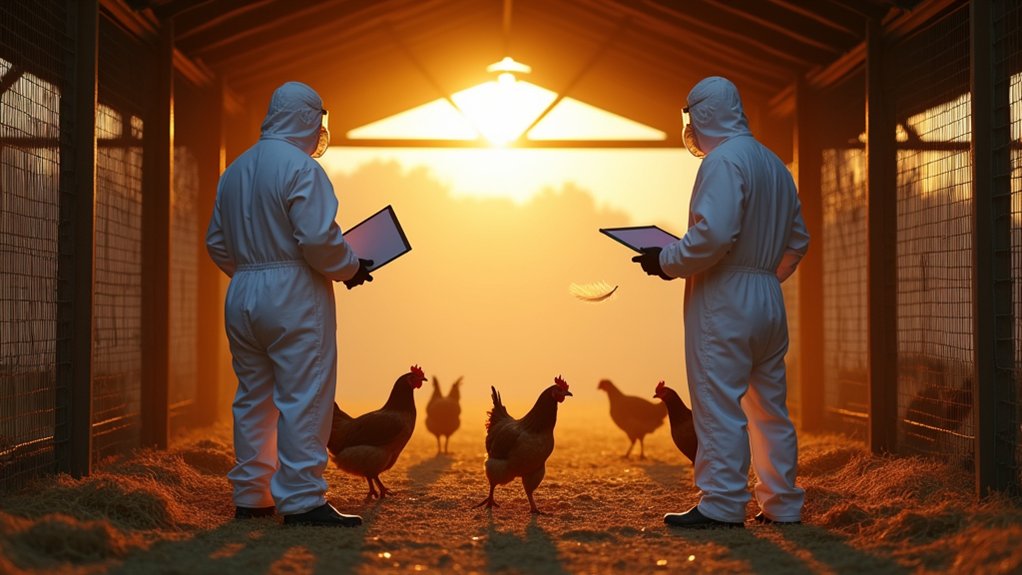Despite 97 million bird deaths and H5N1’s spread to cows, cats, and alpacas, human cases have mysteriously vanished in the U.S. for 90 days straight. The last confirmed infections occurred in May 2025, affecting two Michigan farm workers. While experts maintain intense surveillance and the government pours $200 million into combat efforts, doctors remain baffled by the sudden silence. The calm feels unsettling – like the virus is plotting its next move.

Relief swept through public health circles as the United States marked 90 days without any new human cases of bird flu. The last confirmed infections occurred in May 2025, when two Michigan farm workers caught H5N1 while handling infected animals. Doctors are genuinely puzzled by this unexpected lull in human cases.
A puzzling three-month respite from H5N1 infections leaves health officials both relieved and wondering about the virus’s next move.
It’s not like the virus took a vacation. H5N1 continues to tear through American farms like a microscopic wrecking ball. Nearly 97 million birds have met their maker since February 2022, and the virus has jumped to cows, alpacas, and even caused a disturbing number of cat deaths on farms where the felines helped themselves to contaminated raw milk. The daily updates from APHIS continue to track the spread across commercial and backyard flocks.
The government isn’t sitting idle during this mysterious pause. They’ve thrown serious money at the problem – $200 million, to be exact. Dairy farmers are getting an average of $28,000 each to help cope with the mess, while the CDC and FDA are burning through $101 million tracking this viral menace.
The latest large-scale poultry outbreaks hit South Dakota and New Jersey in May 2025. Meanwhile, about 20% of commercial milk samples in affected regions are still showing traces of the virus. Despite all this animal activity, humans seem to be getting a break – and nobody really knows why.
The pattern so far has been pretty clear: every U.S. human case involved workers who had prolonged, direct contact with sick animals. No human-to-human transmission has been confirmed, and the symptoms have been relatively mild. It’s like the virus is content just messing with our food supply for now. The CDC’s influenza surveillance systems continue to show no unusual flu activity in the general population.
Scientists aren’t celebrating just yet. The CDC and USDA are maintaining their intense surveillance, especially in high-risk states. The virus has already spread globally, hitting every continent except Australia as of February 2025.
Farm workers are still suiting up in protective gear like they’re heading into battle – because in a way, they are. This pause in human cases might be good news, but it’s also making experts nervous. In the world of infectious diseases, silence isn’t always golden.





